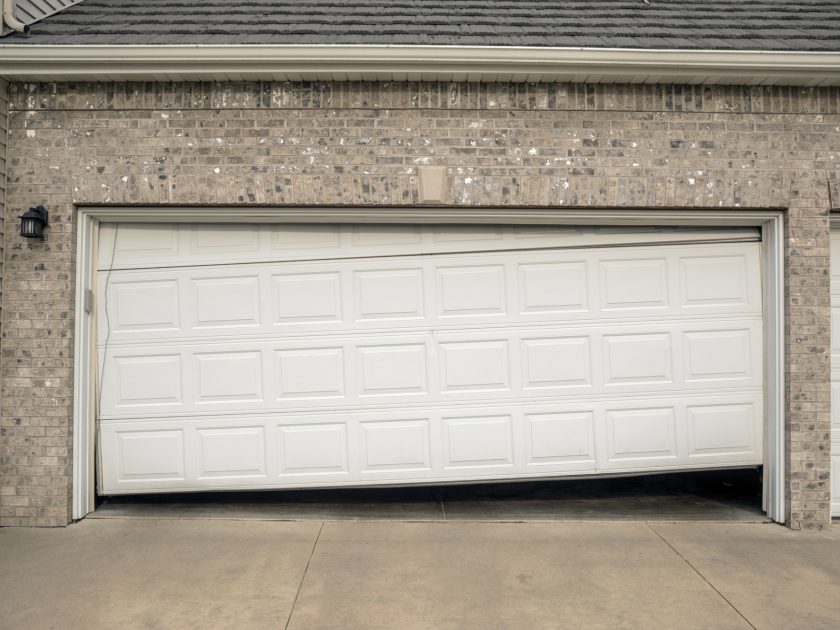Skilled Garage Door Repair for Damaged Tracks and More
Skilled Garage Door Repair for Damaged Tracks and More
Blog Article
Common Garage Door Troubles and Exactly How to Repair Them
Garage doors are essential for both safety and benefit, yet they frequently present a selection of usual problems that can irritate property owners. While some concerns may show up uncomplicated to solve, others may need an extra nuanced understanding of garage door technicians.
Noisy Garage Door Procedure
A noisy garage door operation can be a significant source of annoyance for home owners, frequently suggesting underlying mechanical problems. Such interruptions may stem from numerous reasons, including damaged rollers, loosened hardware, or not enough lubrication. Recognizing the source of the noise is essential for effective resolution.
One usual root cause of excessive sound is the visibility of rusty or worn-out rollers. With time, these parts can deteriorate, resulting in grinding or squealing audios as the door relocations. Regular examination and replacement of these rollers can substantially lower sound levels. Furthermore, loose screws or screws in the door device can create rattling sounds throughout procedure. Tightening these bolts makes sure a more steady and quieter motion.
Another contributing aspect is inadequate lubrication of the door's relocating components. Using a premium lube to the tracks, springtimes, and rollers can significantly diminish rubbing and noise. Homeowners should perform this maintenance periodically to keep optimal performance.
Lastly, the garage door opener might likewise generate sound as a result of its age or mechanical issues. If the noise continues despite resolving various other factors, getting in touch with a professional for a comprehensive examination and prospective repair may be needed.
Door Will Not Open or Close
Experiencing a garage door that won't open or close can be unbelievably discouraging and commonly indicates a breakdown within the system. A number of elements can add to this concern, and recognizing the root reason is necessary for reliable resolution.

Next, inspect the safety sensing units situated at the base of the door. These sensing units can end up being misaligned or blocked by debris, stopping the door from operating correctly. Tidy the sensing units with a soft towel and ensure they are aligned.
Additionally, the garage door's internal elements should be reviewed. Issues such as a broken spring, damaged rollers, or a harmed opener can hinder movement. If any type of elements seem harmed, it may be a good idea to speak with a professional for repair work.
Misaligned Tracks
(Convenient Access)Misaligned tracks can severely interfere with the smooth operation of a garage door, leading to functional failings such as irregular motion or total immobilization. This concern usually arises because of a variety of variables, consisting of deterioration, unexpected effects, or improper installment. When the tracks are Your Domain Name misaligned, the rollers can stagnate easily, which not only stresses the electric motor but likewise poses safety threats.
If you discover any inconsistencies, it is crucial to address the issue quickly. Meticulously touch the track back right into its correct placement using a rubber club or a similar tool, guaranteeing it is straight and level.
Once the positioning is fixed, retighten the screws to safeguard the track. For a more long-term remedy, take into consideration enhancing the tracks with added braces. Regular maintenance, including cleaning the tracks and making sure rollers are in good condition, can prevent future misalignments. By addressing misaligned tracks immediately, you can restore the performance of your garage door and enhance its durability.
Broken Springs
Amongst the various elements of a garage door system, busted springtimes are one of the most typical issues that can significantly impede its capability. Garage door springtimes are important for stabilizing the weight of the door, enabling smooth opening and closing. When a spring breaks, it can bring about a door that is difficult to run or, in many cases, entirely inoperable.
There are 2 major kinds of springtimes: torsion springs, which are installed above the door, and extension springtimes, located on either side. Indicators of a busted springtime consist of a door that will not open, a noticeable space in the spring, or a loud sound throughout procedure. Trying to run a garage door with a broken springtime can cause additional damages to the door or the opener.
Fixing damaged springs is not a do it yourself job; it calls for specialized tools and experience as a result of the high stress entailed. It is advisable to speak with a specialist technician who can securely replace the springs and make certain the door is correctly balanced. Regular upkeep and evaluations can aid stop springtime failings and extend the life expectancy of the garage door system.
Push-button Control Issues

The first action is to check the batteries in the remote control. Change them if they are weak or dead. If the remote still stops working to operate, examine the garage door opener to ensure that its sensing units are clean and unhampered. Dirt, particles, or misalignment might impede the signal transmission between the remote and the opener.
Disturbance from various other digital devices can also impede remote performance. Make sure that close-by tools, such as cordless routers or cordless phones, are not creating disturbances. garage door service. If disturbance is believed, attempt moving these gadgets even more far from the garage door opener
In many cases, the remote may need to be reprogrammed. Get in touch with the supplier's standards to reset the remote control and synchronize it with the garage door opener. If all else falls short and the remote remains to malfunction, think about getting in touch with a professional specialist for a comprehensive inspection and potential substitute of the remote or opener.
Verdict
(High-Quality Standards)In recap, typical garage door issues can considerably impact functionality and safety. Positive maintenance and timely repairs can make certain optimal performance and durability of garage doors.
Report this page